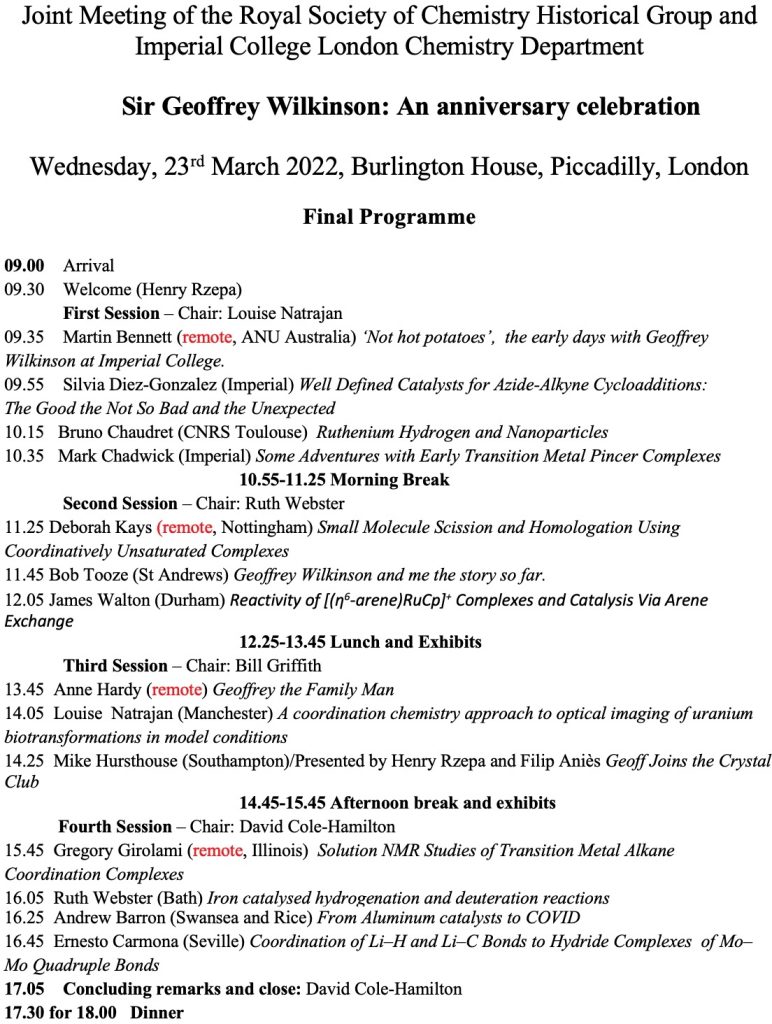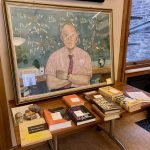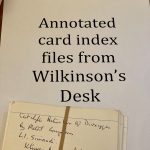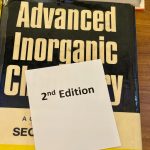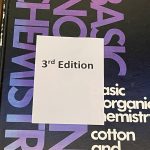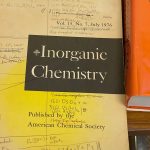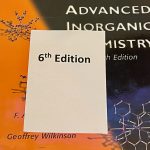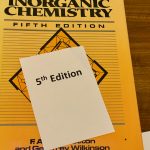The meeting covered the scientific life of Professor Sir Geoffrey Wilkinson from the perspective of collaborators, friends and family and celebrated three anniversaries, the centenary of his birth (2021), the half-century anniversary of the Nobel prize (2023) and 70 years almost to the day (1 April) since the publication of the seminal article on Ferrocene (2022).[cite]10.1021/ja01128a527[/cite]
The meeting was organised as “inverse hybrid” (to use the new terminology), with a maximum capacity in-person audience attending along with fourteen speakers, three of whom were remote and one who could not attend on the day but whose presentation was given on their behalf. I will not give abstracts for the talks here, but note two common themes that I thought emerged during the day.
- All the speakers found themes in either their memories of Wilkinson and their time in his laboratories or their current research work that show how he continues to influence, along with the famous text book that he co-wrote, the modern world of chemistry. He truly left a remarkable legacy.
- This is a personal observation, but in his day, Wilkinson was famously sceptical of the ability of molecular modelling to cast profound insights into the molecules his group were studying. Yesterday I think with only one or two exceptions, the talks were accompanied by “DFT modelling” helping to provide such insights, either into the reaction mechanisms via energy profiles or into the properties of the molecules themselves, including their spectroscopy.
A small exhibition of artefacts included his famous portrait, all the editions of the text book and other items from his desk.
Finally, I thought I might explore the famous controversy surrounding the model of ferrocene which is shown in the photos below. It is shown with the two cyclopentadienyl rings in a so-called “eclipsed” conformation. To cast light on this, I show a search of the Cambridge crystal database of all molecules with this sub-structure. There are 24,868 of them.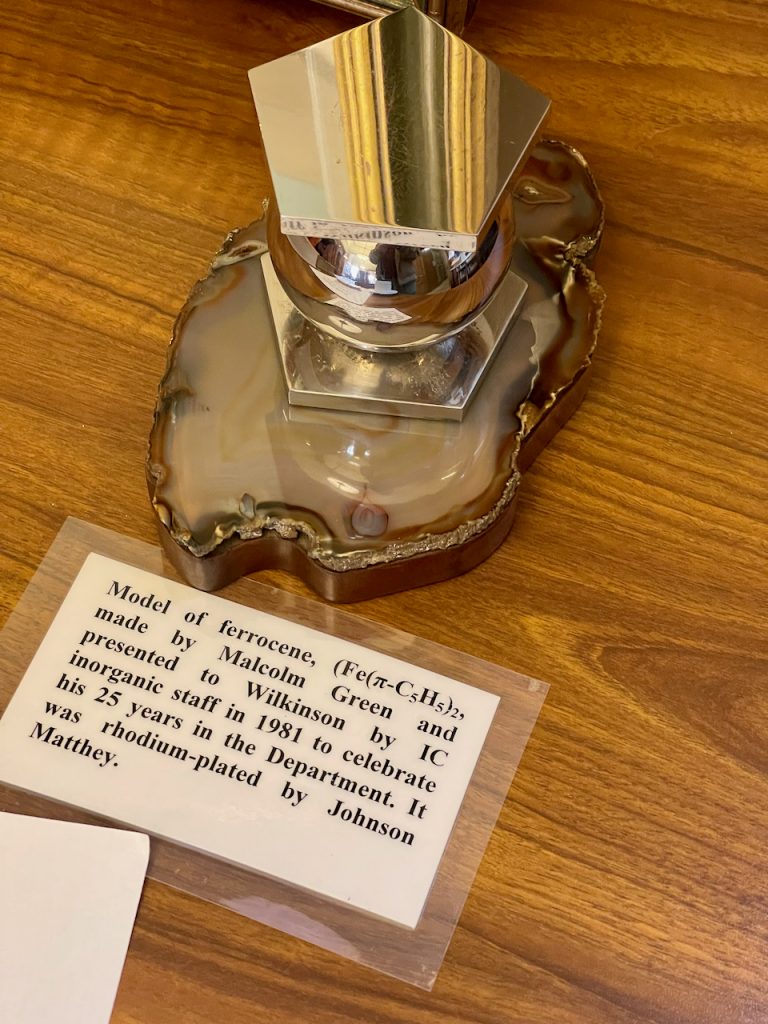
The histogram plot of the dihedral angle is shown below. The staggered geometry has a dihedral of 36° and you can see a small maximum at this point in the distribution below. But this is dwarfed by 0°, the value for the eclipsed orientation. The barrier to rotation is known to be very small, and this is reflected in the almost continuous distribution amongst those 24,868 molecules.
